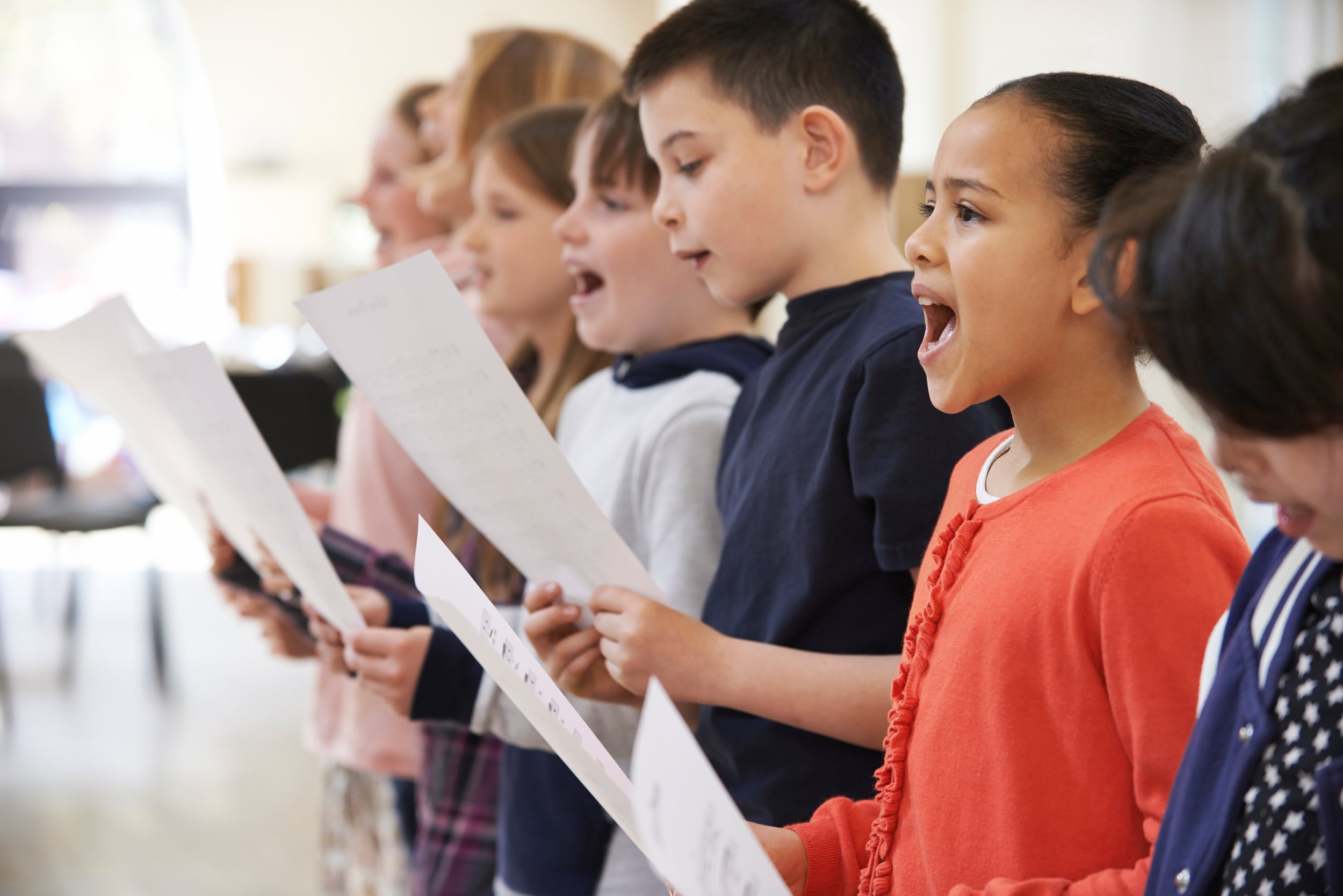Singing lessons for children
Learning to sing when you are a child can be wonderful experience. Children love to sing, my niece and nephew are always singing around the house. I love the confidence they sing with and believe it is important to nurture their talent.
My singing lessons for children and small groups of children are designed to teach children the skills they need to strengthen and control their voices, in a fun and supportive way. Your children’s voices are still developing as they grow through their teenage years so it is very important to make sure that they are taught suitable exercises which are specifically designed for their voices. My singing lessons are combined with ‘song practice” so that children can apply the vocal techniques they learn into the songs they sing.
Learning all of the ways that a voice can be well maintained is possible for children. Young voices benefit greatly from a gradual strengthening process, and an awareness of how the voice works and how to best use it for singing. Young voices need to be nourished and guided in a way that is not forceful and will not cause damage to developing voices.
There is nothing like children exploring the joy, adventure and excitement of music but their voices need to be nourished and guided with gentle techniques that develop and strengthen their voices in a way that is not forceful.
I believe in making my lessons a positive learning environment. If children want to take exams they can but if they don’t want to I can still assist them to progress through the various levels so that they have a benchmark for their own progress.
With regular practice, their voice begins to open and strengthen. Children become aware of how it feels to sing in a controlled way. Learning to sing at a young age has many remarkable benefits, to include increasing children’s confidence and their ability to perform and speak in public.
I also work with children with special needs.
Teaching children how to sing is a different process to teaching adults. From new-born to adulthood the infant vocal tract increases more than twofold in length.
In a child laryngeal dimensions increase slowly and steadily in size and firmness throughout childhood. The vocal folds also increase their total length by about 6.5mm between the ages of 1 to 12. In the first few years of a child’s life, the vocal folds are made up primarily of mucosal tissue. Only around the age of 2/3 years old does the thyroarytenoid muscle—the vocal folds ligament—begin to develop which gradually gives the vocal folds more stability and structure (as a child learns to speak) . Only by the age of 10 are the vocal ligament and mucosal tissues considerably developed. It is therefore imperative to take great care when teaching children and to ensure that you teach using their natural voice.
Recent studies show that there is ongoing growth, in children’s vocal tracts between birth and age 6 years 9 months and a period of accelerated growth or growth spurt for most vocal tract structures between birth and approximately age 18 months.
The vocal tract – which extends from the true vocal folds to the exterior surfaces of the lips – is very short in early childhood.
Until the age of 2 years the tongue lies entirely in the oral cavity, and then its base begins the gradual descent into the pharynx, so that by the age of 4, the posterior one third of the tongue is located in the pharynx. Only by age 5 is the basic adult configuration of the vocal tract present, but of course this does not mean it has reached its full size. Only by age 9 will the curved contour of the vocal tract be comparable with that of an adult, but even then it still remains shorter and smaller.
In each phase of childhood the child’s voice has a distinctive and underlying anatomy which produces specific modes of singing, because the vocal folds, the larynx, the vocal tract, the resonators and the tongue of the young child are completely different from those found in adults’ singing. Clearly, this all causes a young child’s sung tone to have totally different qualities to those of an adult.
As an example of this, consider how, when children sing on their own—i.e. without adults—you can hear in the majority of instances how their voices easily lift up into higher pitches and bright open timbres, however, when children sing together as a class with an adult you often hear how they push their voice which leads them to use a lower pitch range.
Nowadays children in their early years have the added problem of primarily hear ‘popular’ singers using a type of singing which is based on a heavy, strong contact of the vocal folds. This way of singing is fine for the energy and emotions that stand behind most ‘popular’ forms of music and for older teenagers but is wholly inappropriate for a young child’s voice.
Pre-school children will normally have a forward, light and bright resonance, it is therefore necessary to teach a child by reflecting the child’s natural sound and it is necessary to adjust exercises to a child’s physical capabilities.
Further when teaching the following vocal qualities should be used:
Lots of breath movement, good line and a strong sense of phrasing
Open throatedness
Legato articulation
Clear resonant vowels
Good use of the self (namely, a well balanced use of the body so that unnecessary movements – e.g. pulling the head back or tongue retraction – do not compromise the singing).
Children hear at a higher frequency than adults but will also copy the manner in which an adult sings, it is very important when teaching a child that the quality of an adult’s voice are not copied by a child as this could reduce the brightness, resonance and height of a child’s natural voice.



